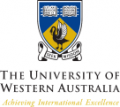epidemiology
Phylogeny, pathogenicity and epidemiology of potato spindle tuber viroid (PSTVd) and related pospiviroids in Australia - Final Report
| Publication Type | Report | |
| Year of Publication | 2012 | |
| Authors | Barbetti, M.; Mackie, A.; Rodoni, B.; Jones, R.; McKirdy, S. | |
| Pages | 13 |
Potato growing areas of Australia are currently considered free of Potato Spindle Tuber Viroid (PSTVd) and this pathogen is classified as an emergency plant pest (Category 3) under the Emergency Plant Pest Response Deed (EPPRD). There were six emergency responses for PSTVd in Western Australia (WA) and New South Wales (NSW) in the six years preceding commencement of this project and the concern was that without any pathway control there would continue to be periodic detections of PSTVd in the future. The importation of tomato seed, which until June 2008 was unregulated, had been implicated as the likely source of PSTVd. However, research at that time from Europe identified alternative hosts of PSTVd as potentially the source of inoculum for PSTVd infected tomatoes. Moreover, research then in WA indicated that both solanaceous and non-solanaceous species might be hosts.
Research outcomes:
This project has determined the extent of Potato spindle tuber viroid (PSTVd) infection in solanaceous and non-solanaceous weeds in Carnarvon, Western Australia; defined the genetic relationships between the strains of PSTVd that occur in Carnarvon and those found elsewhere in Australia; demonstrated how this pathogen is able to survive and spread on contaminated surfaces; revealed the pathogenicity of local PSTVd on potato and tomato plants; and provided key information to allow instigation of appropriate quarantine, disinfection and management protocols to prevent its further importation into and spread within Australia.
Research implications:
The horticultural industries in Australia now have been provided with a clearer understanding of the origins of the PSTVd outbreaks in Australia over recent years. Further, they have been provided with a better understanding of the dynamics of PSTVd epidemics in the field, the sources of infection, how contact transmission occurs, and how survival and infectivity is affected by different material surfaces. Measures that need to be taken at a national, state and industry level to minimise future spread the pathogen within Australia are now better defined (e.g. protocols to ensue seed is free of PSTVd contamination). The findings of this project have significantly advanced Australia’s capacity to safeguard its potato, tomato and other solanaceous plant-based industries. Ongoing work to highlight possible measures for disinfestation of contaminated materials will further enhance Australia’s border security while also helping to secure the future of valuable horticultural exports from Australia.
Acknowledgements:
Horticulture Australia Limited for matching funding, DAFWA for paying half salaries for Martin Barbetti and Roger Jones during this project.
PROJECT DETAILS
Complete
Institution
University of Western Australia
Term
July 2009 - June 2012
Budget
$387,000
PROGRAM DETAILS
CORE CRC PARTICIPANTS
SUPPORTING CRC PARTICIPANTS
Simplifying surveillance for air-borne fungal pathogens
| Publication Type | Conference Proceedings | |
| Year of Publication | 2008 | |
| Authors | Vogelzang, B.; Scott, E.; Ophel-Keller, K.; Salam, M.; Davidson, J. | |
| Conference Name | 9th International Congress of Plant Pathology | |
| Series Title | Journal of Plant Pathology | |
| Edition | 90 (S2) | |
| Pagination | 95 | |
| Conference Start Date | 24/08/2008 | |
| Conference Location | Torino, Italy | |
| URL | http://www.sipav.org/main/jpp/volumes/0808/ICPP_2008.pdf |
This project assessed the statistical and modelling tools available to evaluate surveillance systems and developed a surveillance system evaluation methodology to measure the effectiveness of early warning, area freedom and response surveillance. The project determined the sensitivity of surveillance systems to detection sensitivity, risk area analysis and uncertain epidemiological characteristics of spread and reproduction and optimise surveillance systems by using epidemiological knowledge.
What is the biosecurity problem?
Despite the biosecurity resources invested in surveillance programs, there are no accepted tools for evaluating the quality of surveillance with respect to the spatial epidemiology of invading pests. Surveillance implicitly underpins claims of plant health status for geographic areas. Our ability to manage eradication and containment programs, plant movement risks and early detection has been hampered by difficulties in interpreting what our surveillance is telling us. Quantitative surveillance analysis techniques based on epidemiological risk can provide a framework for measuring the value of data produced by surveillance systems and provide a methodology for assessing surveillance options.
The main outputs of this project were to:
- develop a methodology for negotiating area freedom related trade based on surveillance and risk assessment
- develop surveillance optimisation strategies for EPP early warning surveillance, and
- develop a spatially integrated analytical approach to surveillance evaluation to optimise EPP control options
Who are the end-users of this research?
This project resulted in a new PhD graduate trained in statistical techniques to guide and interpret surveillance emergency pest surveillance programs. The graduate was immediately employable within the plant biosecurity industry, increasing Australia's capability to undertake EPP surveillance.
STUDENT

Mr Mark Stanaway
Student CRC60034: Bayesian Surveillance Systems - PhD
mark.stanaway@deedi.qld.gov.au
Phone: 07 4044 1605
Fax: 07 4035 5474
Read More
PROJECT DETAILS
Complete
Supervisor
Dr Kerrie Mengersen
Supervising Institution
Queensland University of Technology
Term
December 2006 - November 2009
LOCATION
This research project will increase our knowledge about the epidemiology and biology of the exotic plant pathogen Fusarium wilt of banana caused by Fusarium oxysporum f. sp. cubense ‘tropical' race 4 (Foc TR4)
What is the biosecurity problem?
The strain Foc TR4 is already present in Australia (Darwin). However, through quarantine measures the disease has not progressed further than the outer Darwin rural area. Once Foc TR4 is introduced to a new area, establishment and further spread is rapid. Much about how the disease spreads so effectively is unknown. As yet, there are no methods of eradication of this fungus from a banana plantation. Alternative strategies need to be developed and validated that meet control and containment goals while minimising economic and social impact. This is particularly important if Foc TR4 is detected in important banana growing regions of Australia, such as Queensland, which is responsible for 95% of the Australian banana industry.
The main outputs of this project are to:
- increase in our knowledge of the epidemiology of Foc TR4
- Further understand of the infection processes of Foc TR4
- develop methods for containment and control of Foc TR4
Who will be the end-users of this research?
The potential end users of the knowledge acquired in this study includes people in the banana industry as well as people involved with Primary Industries.
STUDENT

Ms Rachel Meldrum
Student CRC60097: Fusarium TR4 - PhD
rachel.meldrum@nt.gov.au
Phone: 08 8999 2247
Fax: 08 8999 2312
Read More
PROJECT DETAILS
Active
Supervisor
Andrew Daly and Lucy Tran-Nguyen (DPIFM) and Elizabeth Aitken (UQ)
Supervising Institution
Northern Territory Department of Primary Industry, Fisheries and Resources, and The University of Queensland
Term
February 2008 - February 2011




